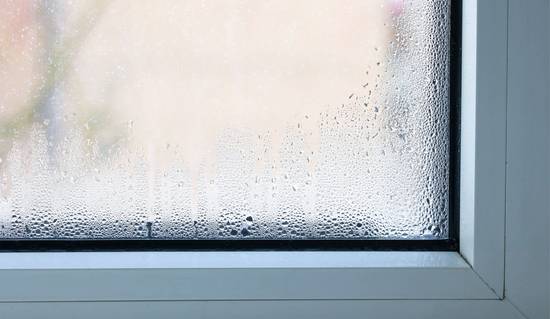
Windows allow the outside world in, but sometimes they bring condensation. Condensation between the panes is also quite common. So, if you ever wondered why your windows become misty or foggy, here we look at what causes it and what you can do about it.
Condensation happens when warm, moisture-laden air meets a cooler surface, like a window. This meeting prompts water vapour in the air to transform into droplets on the glass. While it's a natural occurrence, getting regular condensation often means issues with ventilation, indoor humidity or window quality. Checking ventilation and humidity levels and evaluating window repairs will help you begin to find the solution.
Having condensation can lead to health issues such as breathing problems and allergies too. To deal with window condensation properly, you’ll need to identify the cause of the problem.
Areas of damp and moisture in the home are the perfect conditions for mould spores and bacteria to multiply. Mould is now considered to cause asthma to develop, not just make it worse. These pollutants can cause a range of other health problems too:
There is a range of strategies available based on the severity of the issue. Simple DIY fixes, like improving ventilation by using extractor fans or regularly opening windows can make a difference. There are also more advanced solutions like installing permanent dehumidifiers or even considering window replacements for better insulation.
But prevention is better. Preventing window condensation is as important as fixing it.
Maintaining good indoor humidity levels, using proper ventilation and investing in better windows, if needed, can significantly reduce the problems of condensation.
While fixing window condensation is essential, preventing its recurrence is just as important.
Sometimes, condensation can build up between the panes of double or triple-glazed windows. It can be a frustrating issue. When moisture appears between the panes, it typically indicates a problem with the window's seal, allowing moisture to enter and become trapped between the glass layers.
When the seal that keeps the space between the glass airtight fails, moisture can penetrate. This moisture accumulation not only means the insulation capacity of the window has been compromised, but it also obstructs your view.
There are several things that can lead to a failed seal:
Unfortunately, once condensation appears between the panes, the only permanent solution is often to replace the affected insulated glass unit. This involves replacing the entire sealed unit, which includes removing the old glass and installing a new, properly sealed one.
For this, you’ll need a reputable glazier or window specialist. They can assess the extent of the damage, determine the best course of action and replace the affected window unit professionally. Attempting to fix or replace the unit without proper knowledge can lead to an unresolved problem and further damage to the window.
Addressing foggy windows or condensation between the panes isn't considered an easy fix, especially if the issue involves insulated glass units:
While addressing foggy windows due to seal failures between panes may not be an easy or quick fix, tackling condensation caused by interior factors might be more manageable with some adjustments to your home's environment.
But you’ll need to consider seeking professional advice or assistance, especially when dealing with issues related to insulated glass units.
Call us on 0330 108 4111